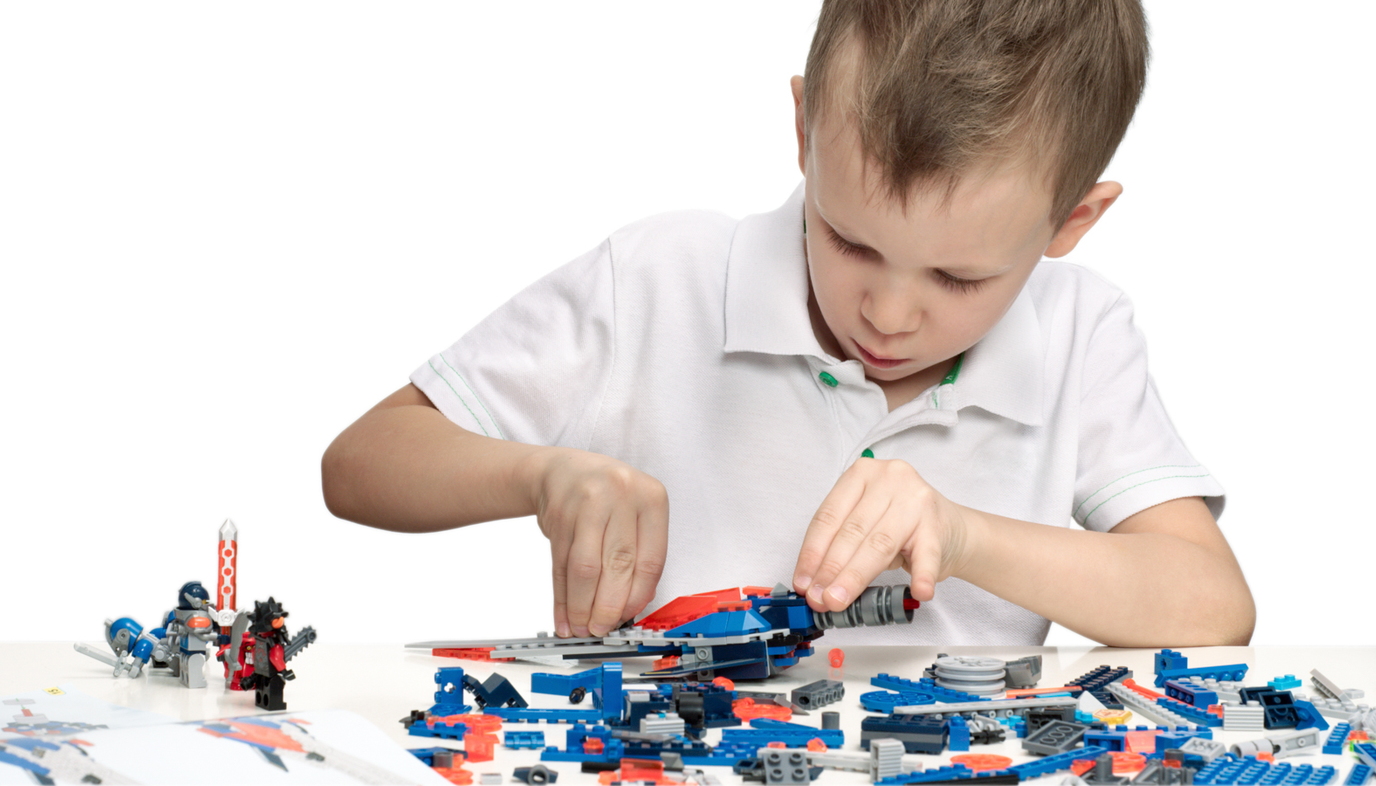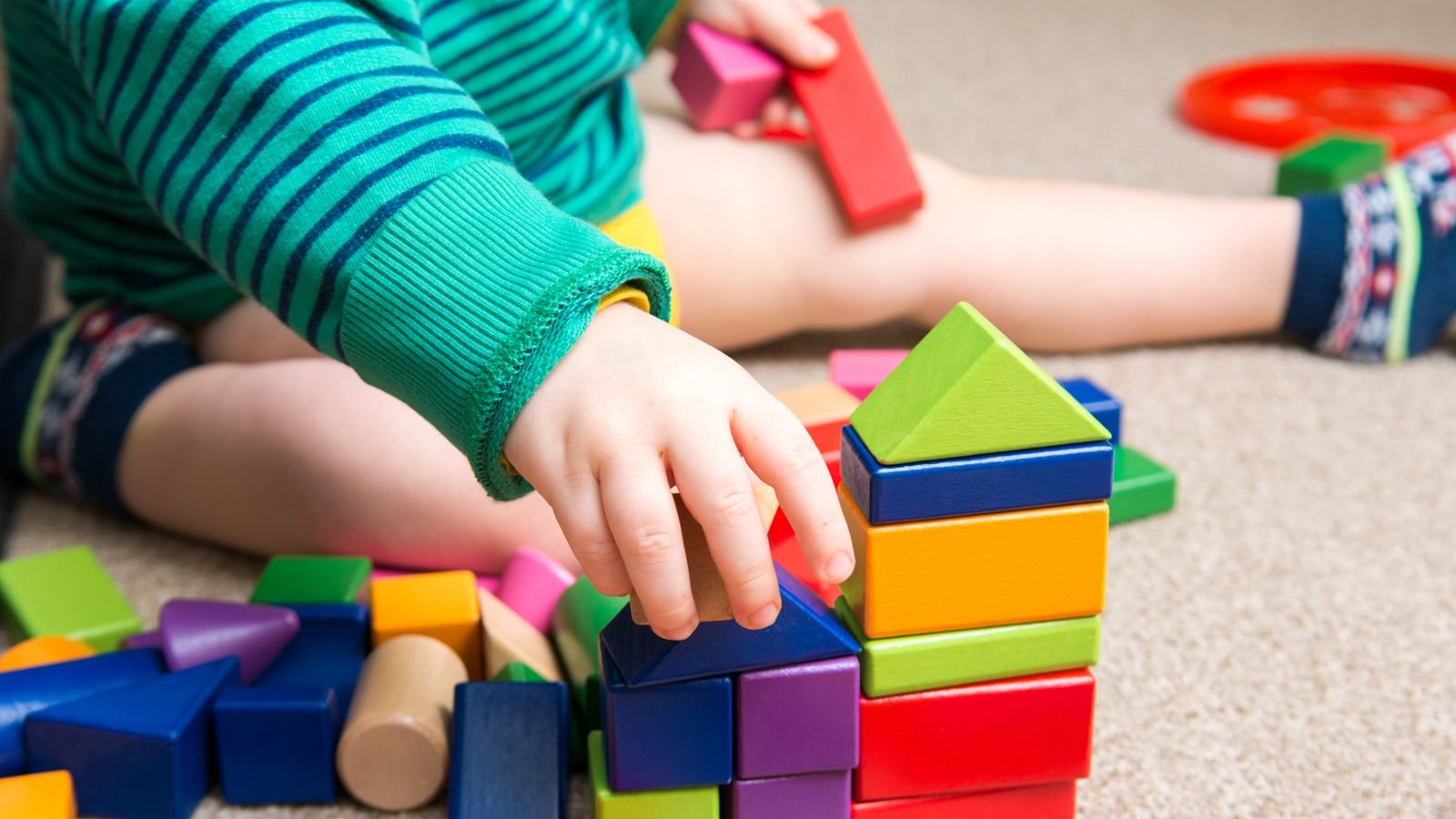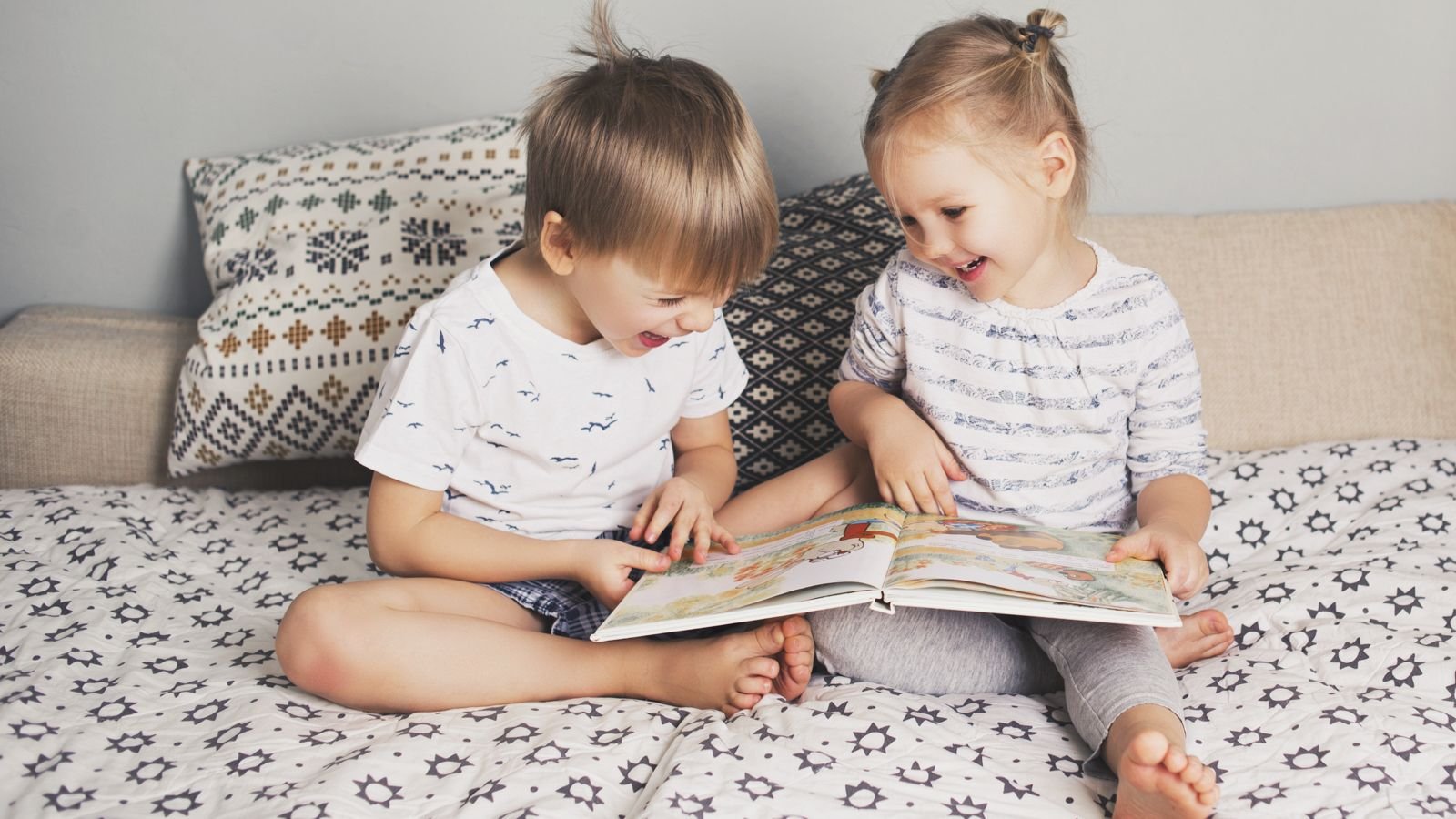
Have you ever seen a toddler open a present and be more enraptured by the packaging the toy came in then the actual toy itself? You’ll be talking with friends and family and look over at your toddler and notice that he’s playing with the box that expensive toy came in, instead of the toy. What does this tell us? Well, psychologists believe the main principle to keep in mind when thinking of toys and games for your toddler is K.I.S.S.: Keep It Simple, Stupid.
Toddlers are just learning about the world around them and how they fit in it. Toys with a lot of bells and whistles will result in overstimulation and cause them to back away; look for something they can maneuver and understand with their small underdeveloped brains.
Top Ten Best Educational Games to Help Your Toddler’s Development
1. Blocks
Making stacks of anything - blocks, plastic cups, Tupperware, etc - is a lot of fun for toddlers because of the excitement of adding item upon item and watching the tower lean in anticipation of that big crash. Toddlers learn about things like restraint and pressure. They learn judgment as well when they try to figure out if they can fit just one more thing on the tower. If the blocks are different colors, you can play sorting games where you group similar colors together and teach him color names. As your toddler gets older, you can get blocks with words on them to teach him reading skills.

2. Lego
They make big pieces now so that there’s no worry of choking, but you can still use the old Lego’s as long as you’re there. The main principle with Lego is that children learn by building. By locking pieces together to create a specific shape, they develop their manual skills as well as recognize patterns in the repetition of setting piece upon piece in a certain way, improving their memory skills.
3. The Color Game
Pick a color and then go around the house and gather different items of the same color, making sure to say the name of the color every time. After you pick a few, have your toddler try and find the items himself. Make sure to encourage him to say the color’s name out loud. Once he can pick a few out himself, change to a different color, and then when you feel he’s confident enough, mix the colors up.
4. The Shape Game
The shape game works the same as the color game and encourages your little one to become visually familiar with the lines of different objects and helps develop his vocabulary as he learns the right names for things.
5. See and Say
Imagine my surprise when this past Christmas, shopping for my niece, I discovered the old toy See and Say was still on the shelves! There’s a reason this educational toy has stood the test of time, it is one of the most truly entertaining and educational toys still on the market. It’s simple, yet novel enough with its automated sounds that children aren’t intimidated by too many complicated buttons. You simply point the large arrow to an animal in the circle, pull the lever and the arrow spins around as the automated voice tells you the name of the animal and the sound it makes. Eventually, your child will learn how to point the arrow and pull the lever themselves, and you should encourage them to repeat the automated voice.
6. Puzzles
Puzzles are wonderful tools for teaching not only hand-eye coordination but are also one of the best games for building self-esteem because the child will have the satisfaction of fitting pieces into similarly shaped openings. With every correct placement, he’ll feel even better if you make a big deal over his small victories. You want to start with a small puzzle, with only a few pieces to work with in the beginning, gradually building to more complicated puzzles as he grows.

7. Books
No one can deny that reading to your child brings an untold wealth of benefits for him but before you break out that tome of fairytales, start small. For toddlers, picture books are best; help him name the different pictures and use an animated voice when reading the few words to make it fun for both of you.
8. The Placement Game
Cut out pictures of rooms from magazines; also cut out objects that belong in those rooms. (Kitchens with teapots, dishes, etc. Bedrooms with pillows, blankets, etc) Help your child place the right objects in the right rooms. Even if he doesn’t get them right the first few times, this game will help him become familiar with the objects that inhabit his world.
9. Fisher Price’s Learn Your ABC’s
While your toddler’s exposure to computers should be limited, there is one online game that you can play with them to help them learn their ABC’s. ‘Learn Your ABC’s on the Fisher Price Website : https://www.fisher-price.com/en_US/index.html A letter is shown and read out loud on the screen and then your child looks for the matching key on the keyboard.
10. Imagination
When you see your child playing with that box rather than the expensive toy within, chances are he’s imagining it’s any number of things but a box: a fortress, a house, a car. He is so focused on the pretend world inside that box and that gives you the key to the most educational toy your child can have to get him started on the right road to mental development. Playing pretend with him, whether it’s animals in a jungle or playing tea party with your daughter, can give them the thirst to learn more in the outside world to expand the adventures in their pretend worlds thus strengthening both their creative and logical minds.
Small simple toys and games work best, but they especially work best when you are active in your child’s playtime. It’s not enough to just give your child a small jigsaw puzzle and then set them in a corner while you go about your day. Whenever possible, sit with your child and be there as a teacher and fellow playmate to not only encourage your child’s self esteem, but to also strengthen the bond between the two of you.
